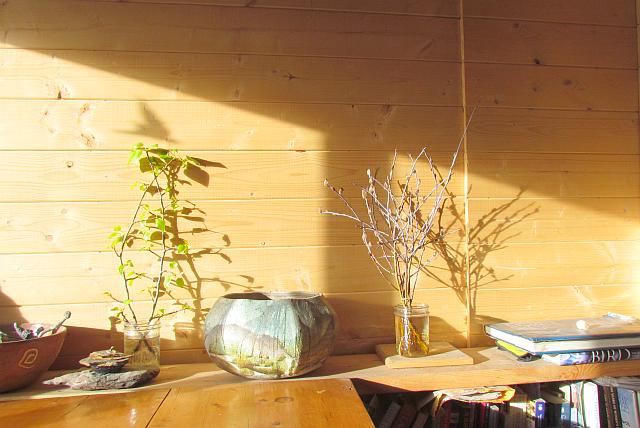Both here and in the mountains at Nuk Tessli, it is very difficult to have access to fresh food. I do not have a greenhouse or sunroom, so I grow a variety of sprouts on the windowsills. In their sprout form, plants have far more nutrition than at any other time of their life. They are mostly very easy to grow.
Some are best sprouted in a jar. Lentils do very well (they are on the left in the picture) – the other jar holds a mix of alfalfa, radish and red clover.
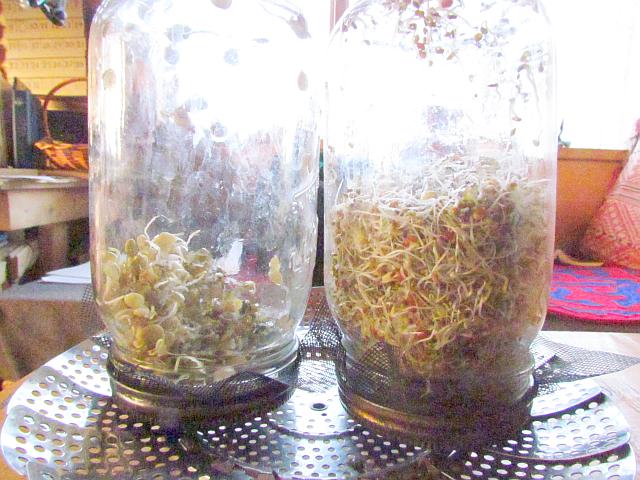
I use wide-mouth canning jars with a bit of mosquito screen held in place with a screw band. You can buy plastic sprouting lids, but the holes are different sizes and I find that the finer perforations do not let the seeds drain properly.
Different seeds need different approaches – the instructions are usually on the packet. But the above species are forgiving if you forget to rinse. Basically, you soak them overnight, then rinse well and put in the jars. Rinse again twice a day. In a couple of days, when the shoots are as long as the seeds, they are ready to eat. The alfalfa, radish mix soon turns green but that is OK. When the lentils start making leaves, they are too bitter. Mung beans can be sprouted this way but to get the long shoots you see in a store, it is necessary to force them under a weight. They are pretty tricky so I don’t bother with them. A friend grows them, and her instructions are in A Wilderness Dweller’s Cookbook.
Most of the sprouts I grow do best in soil. You could put peas in a jar, but I like them best this way. (There is a parsley plant on the left and lemon basil on the right. The peas are in the middle. The left hand container is half eaten, the right one is just started.)
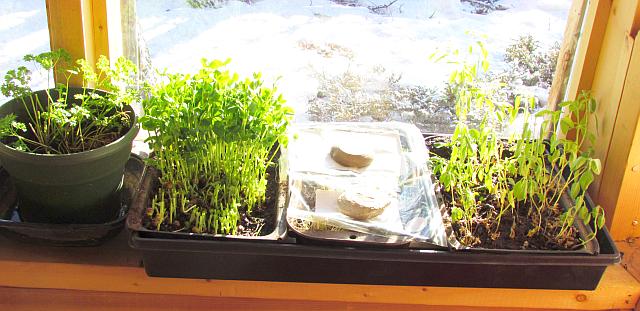
For peas and sunflower seeds, I soak them for at least 12 hours in a jar then sprinkle them thickly on top of well-soaked soil. For about 24 hours, I put a piece of plastic over them to keep them moist. As soon as the sprouts show, the plastic can be removed.
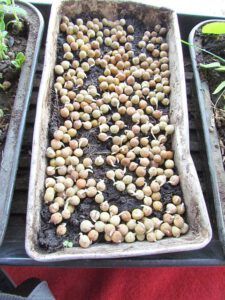
Black oil sunflower seeds are treated in the same way. Some seeds are too slimy to soak and rinse and they are also best grown in soil. I don’t soak them just put them dry on well-watered soil, then cover them with plastic for a couple of days. Kale is on the left and Arugula in the centre. Sunflower sprouts are on the right.
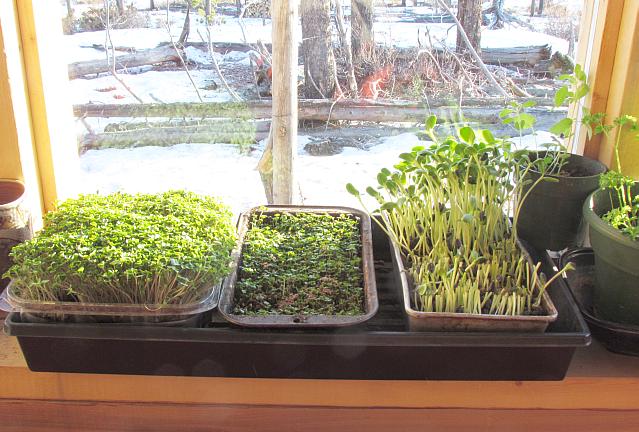
The kale is just about ready to eat. According to my supplier, Mumm’s Sprouting Seeds, kale has as much nutrition as the prized broccoli sprouts, but brocolli sprouts are notoriously difficult to grow – and expensive: kale is very easy – and cheap!
They need to be watered regularly of course: therinse water from the jar sprouts is great, I also use water that I’ve washed veggies with (having no plumbing, I do that chore in a bowl.)
By the kitchen window, I have a pot of chives, filched from the old garden on the homestead, that gives me a good taste every few days.
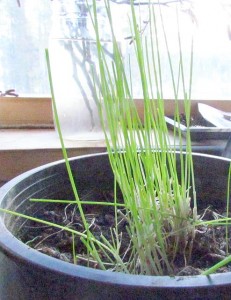
I am not a house-plant fan. I don’t want to have to bother with them if I go away in winter and the house freezes, or when I leave them unwatered in the summer. But the sprouts are done with in a week or so – and they taste so good!
Another thing I like to do as the days grow longer is to bring twigs into the house and watch them leaf out. Here are Red Alder. (The catkins form before the leaves drop off in the fall.)
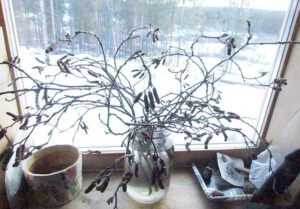
The afternoon sun picks out cottonwood on the left (I collected these before Christmas) and pussy willow on the right.
